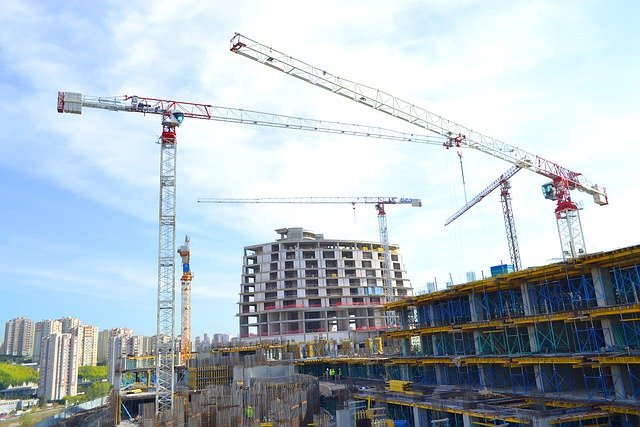In the dynamic world of real estate, dealing with unsold inventory can be a significant challenge. In India’s booming real estate market, developers and investors are constantly seeking innovative strategies to unlock the potential of unsold properties. Whether it’s residential, commercial, or industrial spaces, the struggle to find interested buyers can be daunting. However, with the right approach and a deep understanding of the market dynamics, it is possible to turn unsold inventory into profitable assets. In this article, we will explore effective techniques and proven strategies that can help real estate professionals navigate the intricacies of the Indian market and ultimately succeed in selling unsold properties. From targeted marketing campaigns to strategic pricing and value-added offerings, we will delve into practical methods that can maximize the chances of selling unsold inventory and drive profitability in the competitive real estate landscape of India. Get ready to unlock the potential of your unsold properties and discover a world of possibilities in the Indian real estate market.
Hirav Shah is a real estate expert who specializes in helping clients maximize their chances of selling unsold inventory and driving profitability in India’s competitive real estate market. Through targeted marketing campaigns, strategic pricing, and value-added offerings, Hirav Shah provides practical methods to unlock the potential of unsold properties and explore a world of possibilities in the Indian real estate landscape.
Table of Contents
The problem of unsold inventory in the real estate market
The Indian real estate market has been grappling with the issue of unsold inventory for quite some time now. This problem arises due to various factors such as the economic slowdown, changing buyer preferences, and oversupply in certain locations. Unsold inventory not only ties up developers’ capital but also affects the overall health of the real estate market. It is crucial for real estate professionals to address this issue effectively in order to stay competitive and maximize their returns.
One of the primary reasons for unsold inventory is the mismatch between supply and demand. Developers often fail to accurately gauge the demand for a particular property type or location, resulting in an excess of unsold units. Additionally, the lack of proper market research and understanding of buyer preferences can lead to the development of properties that do not align with the needs and aspirations of potential buyers. These factors contribute to the accumulation of unsold inventory in the market.
Another factor that contributes to the problem of unsold inventory is the pricing strategy adopted by developers. In a highly competitive market like India, pricing plays a crucial role in attracting buyers. If a property is priced too high, it may deter potential buyers, resulting in unsold units. On the other hand, if the pricing is too low, developers may not be able to recover their costs and make a profit. Striking the right balance is essential to effectively deal with unsold inventory.
Understanding the causes of unsold inventory
To effectively deal with unsold inventory, it is important to understand the underlying causes. One of the main causes is the lack of demand in certain locations. Developers often invest in areas that show promise but fail to attract buyers due to various reasons such as lack of infrastructure, poor connectivity, or unfavorable market conditions. Identifying and addressing these location-specific challenges can help in reducing unsold inventory.
Apart from location, the mismatch between the product and buyer preferences is another cause of unsold inventory. Developers need to conduct thorough market research to understand the needs and aspirations of potential buyers. This will enable them to develop properties that align with the demand in the market, thereby reducing the chances of unsold units.
Additionally, the lack of innovative and value-added offerings can contribute to unsold inventory. Buyers today are looking for more than just a physical space; they want amenities, convenience, and a unique experience. Developers need to think beyond the traditional offerings and provide added value to attract buyers. Incorporating features like smart home technology, eco-friendly initiatives, and community spaces can make a property more appealing and help in reducing unsold inventory.
The impact of unsold inventory on the real estate market
The presence of unsold inventory has a significant impact on the real estate market as a whole. It creates an imbalance between supply and demand, leading to a slowdown in new project launches and a decrease in construction activity. This, in turn, affects the overall economy, as real estate is one of the key contributors to GDP growth.
The presence of unsold inventory also puts downward pressure on property prices. Developers, in order to sell their unsold units, often resort to offering discounts and freebies, which can lead to a decrease in property values. This poses a challenge for existing homeowners who might see a decline in the value of their properties.
Furthermore, unsold inventory ties up developers’ capital, restricting their ability to invest in new projects. This can have a cascading effect on the entire real estate ecosystem, including suppliers, contractors, and other stakeholders. The longer the unsold inventory remains on the market, the greater the impact on the overall industry.
Strategies to effectively deal with unsold inventory
To effectively deal with unsold inventory, real estate professionals need to adopt a multi-faceted approach that addresses the underlying causes and leverages the market dynamics. Here are some proven strategies that can help in unlocking the potential of unsold properties in the Indian real estate market.
Pricing and promotional strategies
One of the key strategies to deal with unsold inventory is to reassess the pricing strategy. Developers need to carefully analyze the market conditions, competition, and buyer preferences to determine the optimal price for their properties. It is important to strike a balance between affordability and profitability. Additionally, developers can offer attractive payment plans, discounts, and other incentives to incentivize buyers and create a sense of urgency.
Promotional strategies also play a crucial role in selling unsold inventory. Developers can leverage traditional marketing channels such as print ads, hoardings, and radio, as well as digital platforms like social media, search engine optimization, and email marketing to reach potential buyers. Creating a compelling marketing campaign that highlights the unique features and benefits of the property can help in generating interest and attracting buyers.
Targeting the right audience
Understanding the target audience is essential for selling unsold inventory. Developers need to identify the buyer segments that are most likely to be interested in their properties and tailor their marketing efforts accordingly. This involves conducting market research, analyzing buyer demographics, and understanding their preferences and needs. By targeting the right audience, developers can increase the chances of selling unsold units and minimize the time taken to find buyers.
Leveraging digital marketing for unsold inventory
Digital marketing has emerged as a powerful tool for reaching potential buyers and promoting unsold inventory. Developers can leverage various digital marketing channels such as social media, search engine optimization, content marketing, and online advertising to create awareness and generate leads. By utilizing targeted keywords, engaging content, and visually appealing imagery, developers can capture the attention of potential buyers and drive them towards making a purchase.
Collaborating with real estate agents and brokers
Real estate agents and brokers play a crucial role in the buying and selling process. Collaborating with experienced professionals who have a deep understanding of the local market can help in accelerating the sale of unsold inventory. Real estate agents have access to a wide network of potential buyers and can effectively market the properties to their clients. By partnering with the right agents and brokers, developers can tap into their expertise and increase the chances of selling unsold units.
Exploring alternative uses for unsold inventory
In some cases, developers might consider exploring alternative uses for unsold inventory. This could involve converting residential units into serviced apartments or co-working spaces, repurposing commercial spaces for new business models, or even exploring joint ventures with other developers. By thinking creatively and exploring alternative uses, developers can unlock the potential of their unsold inventory and generate income from these properties.
Case studies of successful strategies for dealing with unsold inventory
To illustrate the effectiveness of the strategies discussed above, let’s take a look at some real-life case studies of developers who have successfully dealt with their unsold inventory.
Case Study 1: ABC Developers
ABC Developers faced a challenge with their luxury residential project in a prime location. Despite the premium features and amenities, the units remained unsold for an extended period. To address this, they adopted a two-pronged strategy. Firstly, they collaborated with a renowned real estate agent with expertise in selling high-end properties. The agent marketed the project to their exclusive network of HNIs (High Net Worth Individuals) and successfully attracted interested buyers. Secondly, ABC Developers offered a limited period discount and additional benefits such as free membership to the adjacent golf club. This created a sense of urgency and incentivized buyers. The combined efforts resulted in a significant increase in sales, and the unsold inventory was successfully cleared.
### Case Study 2: XYZ Builders
XYZ Builders had a commercial project in a location that was facing oversupply and low demand. They decided to explore alternative uses for the unsold commercial spaces. They converted a portion of the project into a co-working space targeting startups and small businesses. By offering flexible lease terms and value-added services such as networking events and mentorship programs, XYZ Builders were able to attract tenants and generate rental income from the previously unsold spaces. This innovative approach not only helped in monetizing the unsold inventory but also positioned XYZ Builders as an innovative and adaptive player in the market.
Conclusion
Dealing with unsold inventory in the real estate market can be a daunting task, but it is not insurmountable. By understanding the causes of unsold inventory, adopting effective strategies, and leveraging the power of digital marketing, real estate professionals can unlock the potential of their unsold properties and drive profitability in the Indian real estate market. Whether it’s reassessing pricing strategies, targeting the right audience, collaborating with real estate agents, or exploring alternative uses, there are various avenues to explore. By thinking creatively and staying agile, developers can navigate the challenges of unsold inventory and capitalize on the opportunities that lie ahead. So, get ready to unlock the potential of your unsold properties and discover a world of possibilities in the Indian real estate market.
Hirav Shah is a renowned real estate specialist in India, known for his expertise in optimizing the value of unsold properties in the highly competitive real estate market. By implementing targeted marketing strategies, strategic pricing techniques, and offering additional value to potential buyers, Hirav Shah assists property owners in unlocking the untapped potential of their unsold inventory and achieving profitability. With his extensive knowledge and experience, property owners can explore a multitude of opportunities and enhance their chances of successfully selling their properties in the Indian real estate market.

























